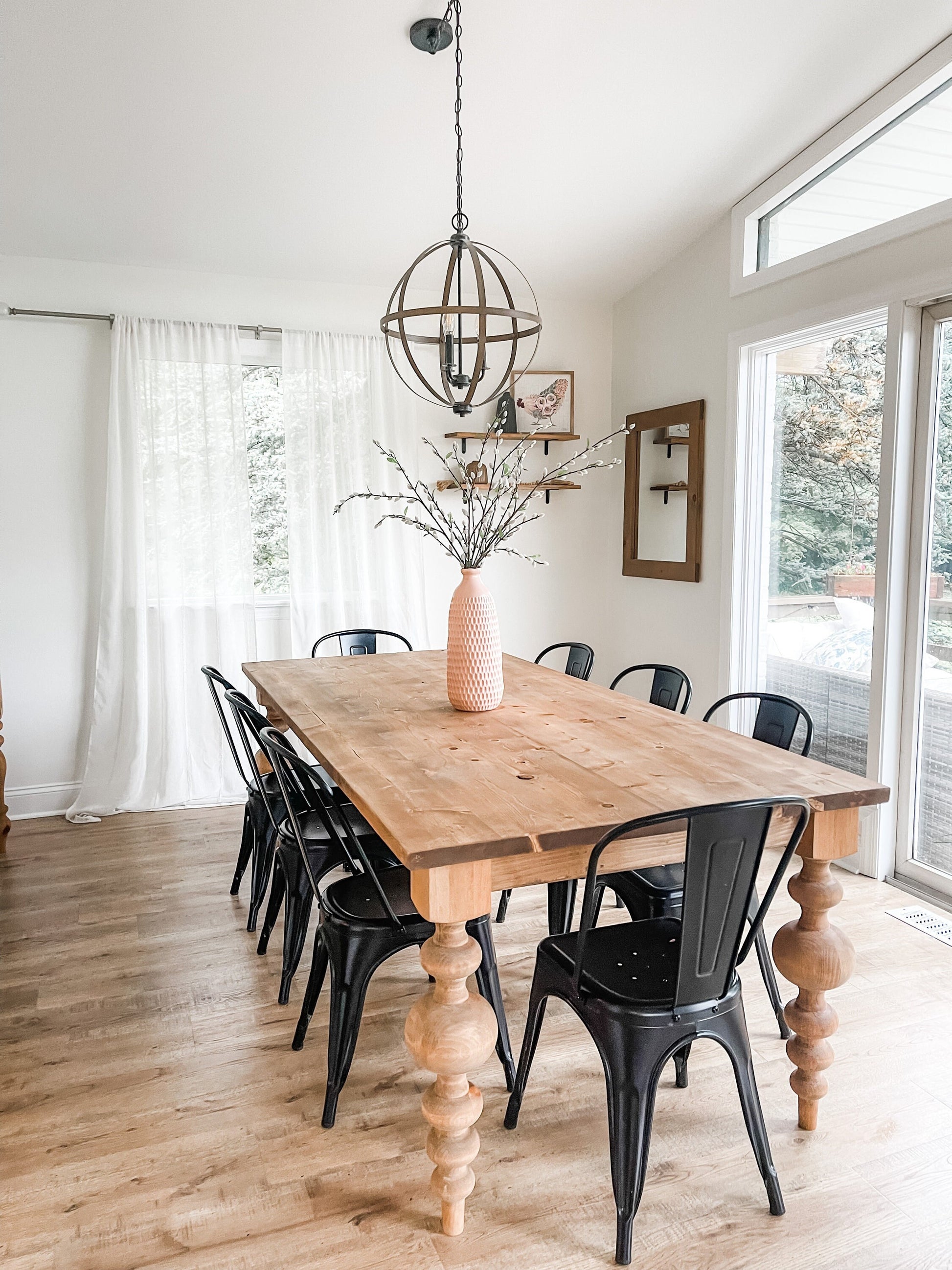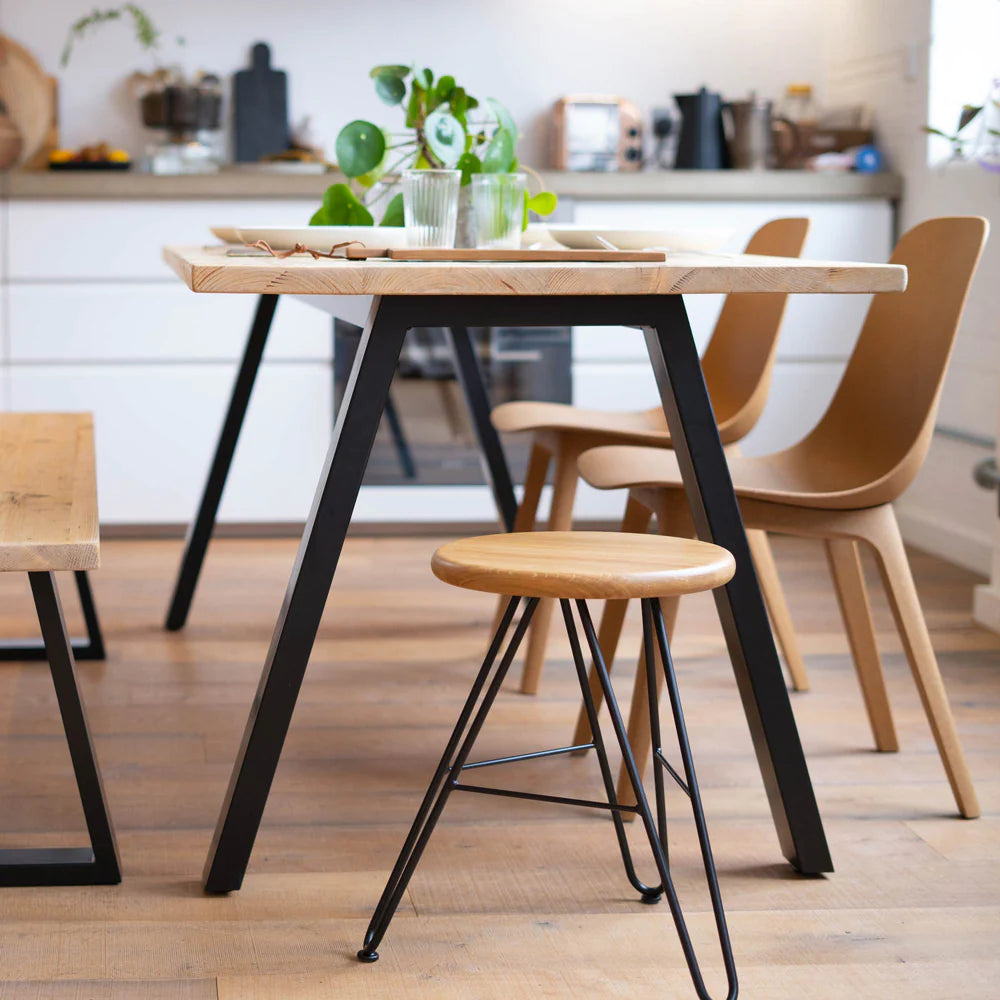How to Pick the Perfect Dining-room Table Legs for Your Home Décor
Selecting the suitable eating space table legs is a nuanced procedure that calls for mindful consideration of numerous elements, including your area restrictions, visual choices, and useful requirements. The interplay between materials, styles, and dimensions can dramatically influence the setting of your dining area, making it crucial to approach this decision carefully.
Assess Your Dining Area
Evaluating your eating room is vital for picking the right table legs that complement both aesthetic appeals and performance. Begin by determining the dimensions of your dining location, including ceiling elevation, floor space, and distance to other furniture. This details will certainly assist identify the appropriate dimension and elevation of your table, which directly affects the option of table legs.
Following, consider the design and layout of your dining space. An open-concept design might benefit from table legs that offer aesthetic lightness, such as slender steel or acrylic choices. Conversely, an extra traditional setup might require sturdy wood legs that give a sense of permanence.
Examine the existing shade combination and materials in your eating area. Balancing the table legs with these elements develops a cohesive appearance that improves the total design. In addition, assume about the capability required in your space. If you often hold huge gatherings, take into consideration legs that provide additional assistance and security.
Ultimately, a complete analysis of your dining room will assist you in making an educated choice, ensuring that your table legs not only boost the visual appeal however additionally serve sensible objectives.
Consider Your Design Preferences
When choosing dining-room table legs, it is important to review your personal design choices, as they substantially affect the total visual of your dining area. Your selection of table legs can either complement or comparison with existing décor, making it crucial to straighten them with your recommended interior decoration style.
If your home leans in the direction of a modern aesthetic, think about streamlined metal or minimalist wood legs that provide a tidy, uncluttered appearance. For a much more typical strategy, elaborate wooden legs with elaborate makings can include a touch of beauty and sophistication. Industrial styles take advantage of robust, basic materials such as recovered wood and metal mixes, reflecting a rugged appeal.
Furthermore, farmhouse and rustic designs frequently favor tough, chunky legs that evoke a feeling of warmth and comfort. Alternatively, if your decor is diverse, you may select unconventional shapes or a mix of materials to create visual interest.

Evaluate Product Options
The selection of material for eating space table legs plays an essential function in both durability and visual charm. Typical products include wood, steel, and composite alternatives, each offering distinctive characteristics that can influence the overall look and long life of your table.
Timber is a classic choice, known for its heat and versatility. Hardwoods like oak and walnut give outstanding strength and can be ended up in numerous stains to match any kind of decoration. Nevertheless, softwoods like pine are much more vulnerable to scratches and damages, making them much less excellent for high-traffic locations.
Steel legs, typically crafted from steel or light weight aluminum, radiate modernity and industrial appeal. They are extremely long lasting and resistant to put on, making them appropriate for family members with youngsters or regular gatherings (dining room table legs). In addition, steel can be ended up in different shades, enhancing the modification opportunities
Composite materials, such as MDF or laminate, offer affordability and varied styles. While normally less sturdy than strong timber or metal, they can still supply an elegant appearance and are commonly simple to keep.
Eventually, the product you pick must straighten with your way of life, aesthetic choices, and the degree of usage your table will experience.
Determine Height and Dimension
Choosing the proper elevation and dimension for your dining area table is necessary for both functionality and convenience. The basic elevation for eating tables commonly varies from 28 to 30 inches, permitting adequate legroom for many people when seated. It is crucial to think about the dimensions of your dining area and the more tips here kinds of chairs you intend to make use of.

Furthermore, consider the percentages of your dining space. A larger table in a sizable location can develop a grand atmosphere, while a smaller table works well in more intimate settings. Ultimately, the appropriate height and size will certainly integrate with a knockout post your total decoration and boost the eating experience for you and your guests.
Explore Modification Opportunities

Furthermore, the layout of the legs can be tailored to fit numerous styles, such as rustic, modern-day, or industrial. For instance, conical legs can stimulate a mid-century modern feeling, while beefy, block-style legs may reverberate with conventional or farmhouse decor.
Property owners can likewise explore shade surfaces, from natural timber stains to paint, enabling them to match or comparison with the tabletop and surrounding style.
Moreover, leg elevation can be readjusted to fit details seating setups or individual preferences, enhancing both convenience and capability.
Last but not least, one-of-a-kind decorations, such as carvings or attractive brackets, can further customize the table legs, making the dining experience not simply a dish but a statement piece in the home. By thinking about these modification alternatives, property owners can develop a dining-room table that really reflects their individuality.
Verdict
Selecting the ideal eating area table legs needs cautious factor to consider of various elements, consisting of the dimensions of the dining area, style choices, material toughness, and desired elevation. Modification alternatives further improve the ability to attain a cohesive aesthetic that matches the overall design. By methodically evaluating these components, property owners can make certain that the picked table legs not only meet useful requirements but also contribute favorably to the eating experience and atmosphere of the home.
Choosing the excellent dining room table legs is a nuanced procedure that requires mindful consideration of different aspects, including your space restraints, visual choices, and practical needs.Analyzing your eating area is essential for picking the right table legs that match both aesthetic appeals and functionality.When establishing size, gauge the location where the table will be put Find Out More to ensure it fits comfortably, enabling for at the very least 36 inches of clearance around the table for simple activity. A larger table in a roomy area can produce a grand setting, while a smaller sized table works well in even more intimate settings.Selecting the ideal dining space table legs needs careful consideration of different variables, including the dimensions of the dining area, style preferences, product durability, and preferred height.